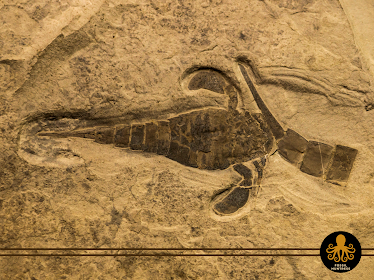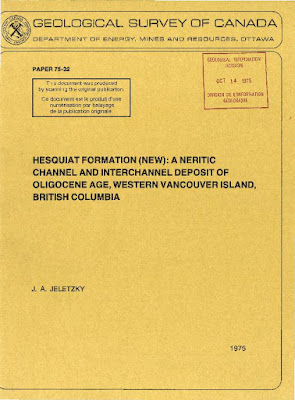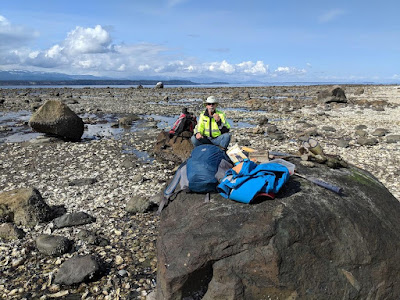 |
| Murdered & Missing Children Art by Roy Vickers |
You may be seeing orange shirts and #215 & #everychildmatters in the news, especially today as it is Canada Day.
You likely know about the Residential School System in Canada — and also the USA. You may have heard the stories of what went on there.
Recently, the media has been flooded by the deaths and unmarked graves of children. We weep for them as a nation.
And you likely feel sadness or outrage for these events that feel like they should be deep in the past — except they weren't.
The 'Indian' Residential Schools were schools built and funded by the government of Canada and run by various religious groups between 1831 (most in western Canada opened around 1860-1870s) and into the 1990s — the last closed in 1997.
The first school to open was the Mohawk Institute Residental School in 1828. They began to receive federal funding in 1831. The last school to close was Kivalliq Hall in Rankin Inlet, in what is now Nunavut, which closed in 1997; it became an IRSSA-recognized school in 2019 following a court ruling, which is why earlier accounts describe the last school closing in 1996.
Yes, recent history. The most important question is not when were these schools built — but why were these schools built?
To answer that we need to think about Canada as a young nation. Canada was meant to be a conquered land under British rule. The 'savages' having served their purpose in the (arguably mutually beneficial) fur trade and providing 'true novelty' in exhibitions like the 1893 Chicago World Fair, now needed to set their (silly, primitive) traditional ways aside and get on with the business of being white — or at least, dressing 'normal', speaking English (or French), adopting Western civilization practices. All primitive 'religious' paraphernalia had been stolen by this point — coppers, masks, etc. — and the practice of potlatch forbidden by law.
The goal by the 1870s was that the Indigenous adults living at that time would be the LAST of the 'savages' and their children would be "educated = assimilated" into Western society. The churches running the schools were completely empowered to "beat them into submission" so that the children would "assimilate or die."
So, to the world in our outward-facing messaging and in our history books, Canada did this kind and generous thing of building and funding schools to give these precious young children a much-needed education. We did this because, we as Canadians, are good guys.
All of this is hard to believe given Canada's global image. We are the quiet, polite folk with the funny accent. What is being described sounds more like the work of the Nazi's extermination pogroms during the Second World War.
You will be surprised to learn, then, that the term "Final Solution" was coined by Indian Affairs Superintended Duncan Campbell back in 1910 as he articulated how he envisioned solving the "Indian Problem" in Canada.
"It is readily acknowledged that Indian children lose their natural resistance to illness by habitating so closely in these schools and that they die at a much higher rate than in their villages. But this alone does not justify a change in the policy of this Department, which is geared towards the final solution of our Indian Program."
That statement was written by Duncan C. Scott in April 1910, in his capacity as the Superintendent of Indian Affairs to General-Major D. McKay, British Columbia's Indian Agent (Department of Indian Affairs Archives, RG 10 series).
 |
| Indian Residential Schools operated in Canada from 1831-1996 |
Documents (letters, internal direction by government, church documents) will be produced that show that the schools were built to deliberately separate children from their parents so that their parents, aunties, uncles and grandparents, would be the
last of the
savages.
Some children and parents did want their kids to go to school for an education. And some had schools close to home that they could have or would have attended but they could not.
Under the Indian Act of Canada, every First Nation (Metis & Inuit still had to but not under this Act) child had to attend a residential school (built far from home and run by the church) by law.
It was illegal for these same children to attend ANY other educational institution. Why would we care where they were educated? It would actually have been more economical to have them live at home and attend school.
If education was the goal, why have this written into law?
History books will need to be amended to correct the untruths, the systemic re-writing, editing and white-washing of history. It is my hope that they include exact copies of these documents and not a paraphrased interpretation. The original wording is chilling. When you do get the chance to read the original documentation, please do.
So, 150,000 or more 'Indians' — First Nation, Inuit and Metis — were forced to attend these residential schools, not to give them an education but to deliberately strip them of their culture. It wasn't lost as a by-product of attending, it was the sole reason for their attending.
We may find that the number exceeds 150,000 as there are pretty good Census records from that time in Canada's history. Even so, 150,000 is every child they could get their hands on from the age of 4-16 living in our country.
We used to paint a picture that children were lucky to attend and that their parents wanted them to attend. This, too, is a lie. It was illegal not to send your children. Children were beaten, tortured and raped. Beaten for speaking their native tongue.
It was illegal to protest your children being taken. It was illegal to even seek legal advice regarding the matter.
We feel sadness today for the few hundred unmarked graves we are finding. This mild 'there-there, that is tragic, lets put up a nice headstone, take a few silent minutes and enjoy a cup of tea... and move on' attitude by our government is not surprising.
We're Canada. We're used to being the good guys. We wrote our history to be the good guys.
But this was G.E.N.O.C.I.D.E. — organized, premeditated, structured and funded genocide in partnership between the church and the government of Canada.
"Genocide — the deliberate killing of a large number of people from a particular nation or ethnic group with the aim of destroying that nation or group."
Canada was dealing with "the Indian problem" back in the 1800s. Lands were set aside (very similar to how we treat animals in a zoo...) and groups of First Nations, Inuit and Metis were moved onto these 'reserves.'
Now, if you want to wage a successful war, you either need to kill everyone outright (though spare a few as slaves) or inter-marry with the population. Given that the first forays by settlers were to trade, it was the latter strategy that was chosen — except it was too slow.
I have more direct quotes that I will dig out to share with you about our governments' views on "the Indian Problem" and the deliberate 'assimilate or die pogrom' as delivered through the Residential School System — think of it as Smallpox 2.0 (infected people and blankets were sent into communities to infect and kill).
We feel sad for the #215 and the hundreds of unmarked graves we are finding. I think the death toll exceeds 50,000. Not all of those graves will be unmarked. Some of those children are in local cemeteries, some were cremated in Indian Hospitals (where medical experimentation was done), some in unmarked graves, but I truly think we are just at the tip of the iceberg.
Realistically, it may be as high as 75,000. There are newspaper reports from way back in the day that speak to a 50% death rate at the schools. Yes, 50%.
That is just the number of dead and buried. What about abused and tortured? Raped and beaten? That number is at or near — or exceeds — 150,000.
So, what happens now? There will be apologies. There will be an inquiry. Many people will buy and wear orange shirts as an act of solidarity — and I thank those who do. For a few weeks, it will saturate the news.
Canada will try to sidestep their active participation and coordination of genocide. Canadian political groups may use this tragedy to help bolster their image for re-election. Good for them. I don't really care why they do the right thing just that they do the right thing.
"This was a sad part of our history (trying to put it in the past) for which we apologize (on behalf of folk long dead so what can we really do about it?) and move forward as a nation (with some parades and emotionally charged solidarity)...
But this doesn't go away with an apology and a kumbaya.
So, the Canadian government will continue to apologize again and again — AND try to slide the blame over to the church, particularly the Catholic Church as they operated about 70% of all of these assimilation centres and because they are perceived to be immune to the law, in many cases above the law, and incredibly well-funded — plus they are well-known bastards with a long history of being hated — the perfect pre-made scapegoat.
So, records will be slow to be produced. Records that support a narrative of this being 'all the churchs' fault" will likely be more readily found and produced than those which directly implicate our government. Some of the records found will be destroyed.
But the truth will come out. Survivor stories will be told.
And it is not just the Catholic Church — though they are a particularly vicious organization with a very long history of abuse and paedophilia — exactly who you would NOT want to entrust with children. These are the same self-righteous charmers who brought us the Inquisition, an infamous history of torture and persecution that goes back to the 12th century. I am not a fan.
I have Christian and Catholic friends whom I love. I love individuals but not institutions who do not hold themselves to account. Love them or hate them, these organizations will be thrown under the bus as they deserve.
Outrage will swell. This time, voices will not be silenced. Atrocities will be acknowledged albeit begrudgingly. Truth and Reconciliation will finally be heard. Land claims, forms of governance and governments will finally be resolved.
If you read canadahistory.ca, you'll see "Western Canada's Treaties were intended to provide frameworks for respectful coexistence."
In Canada, Treaties represent the source of First Nation's peoples' unique nation-to-nation relationship with the Crown. When I first read that 'the treaties were meant as a means of respectful coexistence,' I thought, 'that sounds about right.' Then I thought more of the histories. It sounds great, but it is not true.
I do not know if Canada is capable of honestly dealing with this shame, and guilt as a nation.
Groups protect their own. I worry that those that do come across evidence may destroy it 'for the collective good.' Destruction of evidence is a very common practice. I think we need to acknowledge that we cannot be trusted as a nation to investigate this on our own. I would like the UN as a neutral third party to work with us as a nation as we uncover our historical truths.
What will not happen — though I would very much love it to — is for every church involved to have their church property revoked (not burned to the ground as is happening in our country), all of their records confiscated and made public (as appropriate) and all of the known abusers still working with them abusing the next generation of children, brought to justice.
Every Canadian should read the Truth and Reconciliation Commission's Final Report. This should be taught in schools. Groups should be brought together to discuss this as a nation and work together to plan the next steps.
Folk around the world should read it, too. Canada has a long history of missing and murdered women and children. The Murdered and Missing Indigenous Women and Girls Inquiry did good work and produced 231 Calls to Justice.
These recent news stories will finally be the boot to the neck of Canada to acknowledge the hidden history of this planned, funded genocide by the government of Canada. These recently discovered remains will be the final pebble that creates an avalanche.
This is a powerful time in our history. This is our chance to do what is right — what is just. This is a chance to truly listen and take steps to collectively mend ourselves as a nation of nations. Sadness and outrage are natural responses to this truth. I hope you, too, feel a passionate desire for justice — for Truth & Reconciliation.
Thank you to Roy Vickers for sharing this powerful image to help gain awareness and create dialogue for lasting change.



































